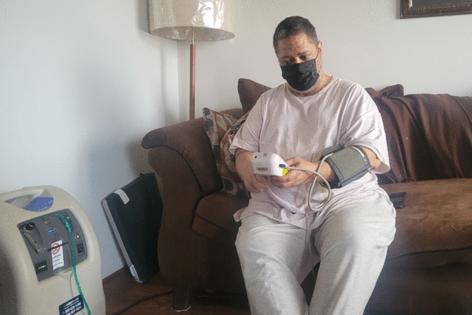COVID and Medicare payments spark remote patient monitoring boom
Published in News & Features
Billy Abbott, a retired Army medic, wakes at 6 every morning, steps on the bathroom scale, and uses a cuff to take his blood pressure.
The devices send those measurements electronically to his doctor in Gulf Shores, Alabama, and a health technology company based in New York, to help him control his high blood pressure.
Nurses with the company, Cadence, remotely monitor his readings along with the vital signs of about 17,000 other patients around the nation. They call patients regularly and follow up if anything appears awry. If needed, they can change a patient’s medication or dosage without first alerting their doctor.
Abbott, 85, said he likes that someone is watching out for him outside his regular doctor appointments. “More doctors should recommend this to their patients,” he said.
Increasingly, they are.
Dozens of tech companies have streamed in, pushing their remote monitoring service to primary care doctors as a way to keep tabs on patients with chronic illnesses and free up appointment time, and as a new source of Medicare revenue.
But some experts say remote monitoring’s huge growth — spurred on during the covid-19 pandemic, when patients were hesitant to sit in crowded doctors’ waiting rooms — has outpaced oversight and evidence of how the technology is best used.
“It is the wild West where any patient can get it if a doctor decides it is reasonable or necessary,” said Caroline Reignley, a partner with the law firm McDermott Will & Emery who advises health providers.
In 2019, Medicare made it easier for doctors to bill for monitoring routine vital signs such as blood pressure, weight, and blood sugar. Previously, Medicare coverage for remote monitoring was limited to certain patients, such as those with a pacemaker.
Medicare also began allowing physicians to get paid for the service even when the monitoring is done by clinical staff who work in different places than the physician — an adjustment advocated by telemedicine companies.
...continued
©2024 KFF Health News. Distributed by Tribune Content Agency, LLC.







Comments